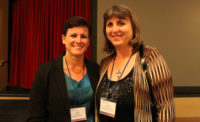Adapting to change in the plumbing industry
This issue of Supply House Times is a prime example of why our industry continues to thrive even when the proverbial monkey wrench is thrown into the mix.
Our industry continues to thrive because it’s filled with forward-thinking people who are not afraid to change.
For starters, there is incoming Southern Wholesalers Association President Brendan Donohue. In his profile Donohue, vice president of sales at South Carolina-based Cregger Co., tells the story about how during the economic downturn the company took a major gamble by adding the Goodman HVAC line. It was a gamble that paid off nicely for Cregger.
And then there are our industry buying groups that continue to roll out programs and initiatives designed to further help their members succeed in today’s marketplace. Also check out some of the innovative programs buying groups have in place.
During my time at the North Central Wholesalers Association conference in Ohio, I had a chance to listen to industry veteran Jim Ambrose present some tips on how to drive profitable share gain in a company. You can check out a video interview I did with Ambrose on this very subject at www.supplyht.com/videos.
Innovation and change also are prevalent on the showroom side of the industry. The American Supply Association recently held a Showroom Managers Networking Council event in Dallas centered on driving designer business to showrooms. The event featured a panel comprised of Tim Strumm (Morrison Supply), Brett McDonald (The Bath & Kitchen Showplace — Dallas), Jenifer Wiley Rucker (Jenifer Rucker Designs), Bruce Graf (Graf Developments), Lisa Baron (Dallas Design Group, Interiors) and Kelly Litton (Delta Faucet). I interviewed Graf and Litton post-event.
Graf, whose Texas-based company specializes in interior renovations, says he enjoys buying his materials from one showroom because of the logistical convenience and the relationships he has developed over the years.
“What a lot of people don’t get is how important relationships are,” he says. “I can call my rep who knows what I want and what I don’t want. We can count on each other. I trust her to make choices for me. You want to feel connected. All my jobs have designers who know who my suppliers are and who I buy from. When they work with me, they know they need to go to this company and talk to my contact. If you are nothing more than a number, you could tell the designer to go anywhere. If I’m no more than a number to a company, I have no reason to drive business in their direction.”
Litton, the showroom manager/territory manager for Delta Faucet’s Dream2O showroom in the Merchandise Mart in Chicago, says driving designer traffic is all about making lasting connections. Hosting events, she says, is one way to accomplish that. “I’m pretty diligent about building on other events/activities going on around town and creating annual events that build anticipation and expectation. If an event is planned and turns out great, make it annual.”
Litton says don’t be afraid to get out and attend other events designers may frequent. “Start networking,” she says. “Attending boutique openings, gallery events, real-estate development launches, food and wine events and the like will get you in front of designers or people who hire designers. Building that network lets you introduce your showroom to them. The next step is to host a networking event in the showroom with your new circle of contacts.”
But be sure not to neglect the space you want those designers to visit. “I thought it was interesting how passionate the designers (at the Dallas event) felt about first impressions when entering the showroom,” she says. “You always think that is true, but hearing it confirmed helps keep you more diligent in noticing the appearance and image you are projecting.”
Graf says those who develop and maintain relationships will ultimately thrive in the showroom game. “You can’t order something online and have a relationship with an online supplier,” he says. “Get to know your customers and take care of them. It’s basic customer service.”
And in our competitive and constantly changing industry, basic customer service is something companies have 100% control over. Use it to your advantage
Looking for a reprint of this article?
From high-res PDFs to custom plaques, order your copy today!






